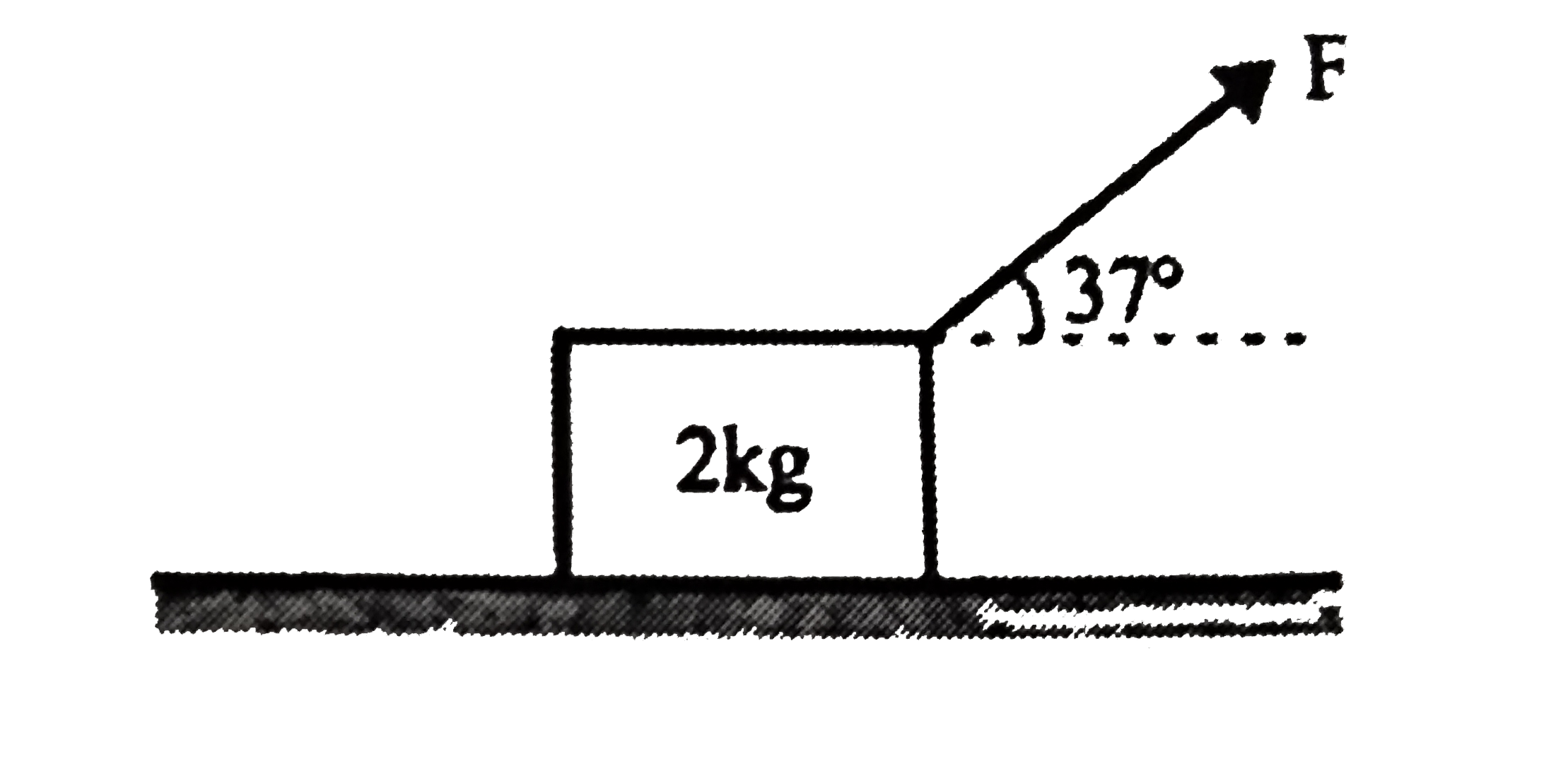A car of mass 400 kg is pulling a coach of mass 300 kg with a force of 4500 N. If the coefficient of friction is 0.001, what is tension ?
2100 N
2126 N
1929 N
2750 N
To solve the problem of finding the tension in the rope connecting the car and the coach, we will follow these steps:
Step 1: Identify the forces acting on the coach
The forces acting on the coach (mass m2=300kg) are:
- The tension T in the rope pulling it forward.
- The frictional force Ff acting backward.
The frictional force can be calculated using the formula:
Ff=μ⋅N
where N is the normal force, which is equal to the weight of the coach:
N=m2⋅g
Given that μ=0.001 and g=10m/s2:
N=300⋅10=3000N
Thus, the frictional force is:
Ff=0.001⋅3000=3N
Step 2: Write the equation of motion for the coach
Using Newton's second law, the net force acting on the coach can be expressed as:
T−Ff=m2⋅a
Substituting the value of Ff:
T−3=300⋅a(1)
Step 3: Identify the forces acting on the car
The forces acting on the car (mass m1=400kg) are:
- The applied force F=4500N pulling it forward.
- The frictional force Ff1 acting backward.
- The tension T in the rope acting backward.
The frictional force on the car is calculated similarly:
Ff1=μ⋅N1
where N1=m1⋅g=400⋅10=4000N:
Ff1=0.001⋅4000=4N
Step 4: Write the equation of motion for the car
Using Newton's second law for the car:
4500−T−Ff1=m1⋅a
Substituting the value of Ff1:
4500−T−4=400⋅a(2)
Step 5: Solve the equations simultaneously
Now we have two equations:
1. T−3=300a (from the coach)
2. 4500−T−4=400a (from the car)
Rearranging equation (1):
T=300a+3(3)
Substituting equation (3) into equation (2):
4500−(300a+3)−4=400a
Simplifying:
4500−300a−3−4=400a
4493=700a
a=4493700≈6.41m/s2
Step 6: Calculate the tension
Now substitute a back into equation (3):
T=300⋅4493700+3
Calculating:
T≈1929N
Final Answer
The tension in the rope is approximately T≈1929N.
---
The forces acting on the coach (mass m2=300kg) are:
- The tension T in the rope pulling it forward.
- The frictional force Ff acting backward.
Ff=μ⋅N
where N is the normal force, which is equal to the weight of the coach:
N=m2⋅g
Given that μ=0.001 and g=10m/s2:
N=300⋅10=3000N
Thus, the frictional force is:
Ff=0.001⋅3000=3N
Using Newton's second law, the net force acting on the coach can be expressed as:
T−Ff=m2⋅a
Substituting the value of Ff:
T−3=300⋅a(1)
The forces acting on the car (mass m1=400kg) are:
- The applied force F=4500N pulling it forward.
- The frictional force Ff1 acting backward.
- The tension T in the rope acting backward.
Ff1=μ⋅N1
where N1=m1⋅g=400⋅10=4000N:
Ff1=0.001⋅4000=4N
Using Newton's second law for the car:
4500−T−Ff1=m1⋅a
Substituting the value of Ff1:
4500−T−4=400⋅a(2)
Now we have two equations:
1. T−3=300a (from the coach)
2. 4500−T−4=400a (from the car)
T=300a+3(3)
4500−(300a+3)−4=400a
Simplifying:
4500−300a−3−4=400a
4493=700a
a=4493700≈6.41m/s2
Now substitute a back into equation (3):
T=300⋅4493700+3
Calculating:
T≈1929N
The tension in the rope is approximately T≈1929N.
Similar Questions
A rope of mass 0.5kg is pulling a block of mass 10kg under the action of force of 31.5N If the block is resting on a smooth horizontal surface calculate the force of reaction exerted by the block on the rope .
View SolutionA 500 kg horse pulls a cart of mass 1500 kg along a level road with an acceleration of 1ms−2. ms . If the coefficient of sliding friction is 0.2, then the force exerted by the horse in forward direction is
View Solution
Knowledge Check
A railway engine of mass 50 tons is pulling a wagon of mass 40 tons with a force of 4500N. The resistance force acting is 1N per ton. The tension in the coupling between the engine and the wagon is
A1600 NB2000 NC200 ND1500NA railway engine of mass 50 tons is pulling a wagon of mass 40 tons with a force of 4500N. The resistance force acting is 1N per ton The tension in the coupling between the engine and the wagon is .
A1600NB2000NC200ND1500NA block of mass 2 kg is kept on a rough horizontal floor an pulled with a force F. If the coefficient of friction is 0.5. then the minimum force required to move the block is :-
 A10 NB10011NC1008ND20 N
A10 NB10011NC1008ND20 N
A car of mass 1000 kg moves on a circular track of radius 20 . If the coefficient of friction is 0.64, then the maximum velocity with which the car can move is
View SolutionA car of mass 800 kg moves on a circular track of radius 40 m . If the coefficient of friction is 0.5, then maximum velocity with which the car can move is
View SolutionA car of mass 1000 kg moves on a circular track of radius 20 m . If the coefficient of friction is 0.64, then the maximum velocity with which the car can move is
View SolutionA block of mass 20 kg is pushed with a horizontal force of 90N. If the coefficient of static and kinetic friction are 0.4 and 0.3, the frictional force acting on the block is (g=10ms−2)
View SolutionA block of mass 0.1 kg is held against a wall by applying a horizontal force of 5 N on the block. If the coefficient of friction between the block and the wall is 0.5, then the magnitude of the frictional force acting on the block is
View Solution

